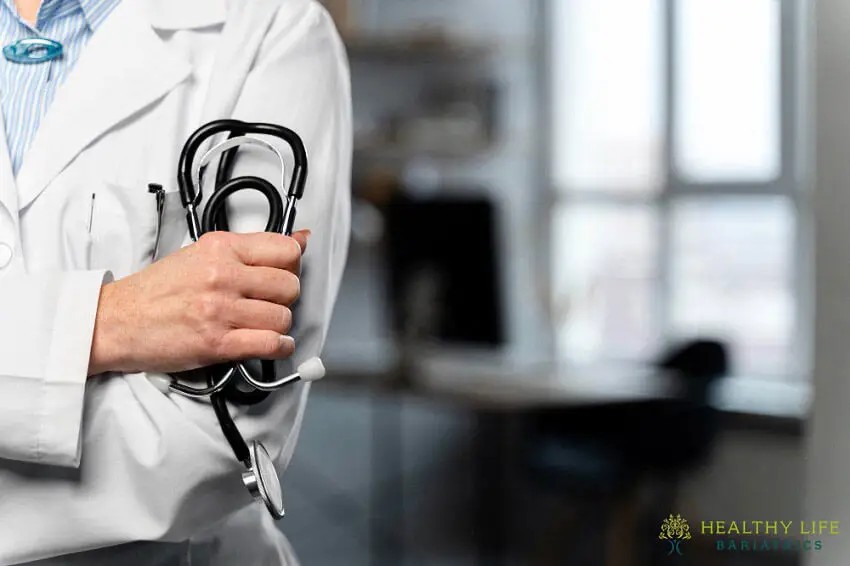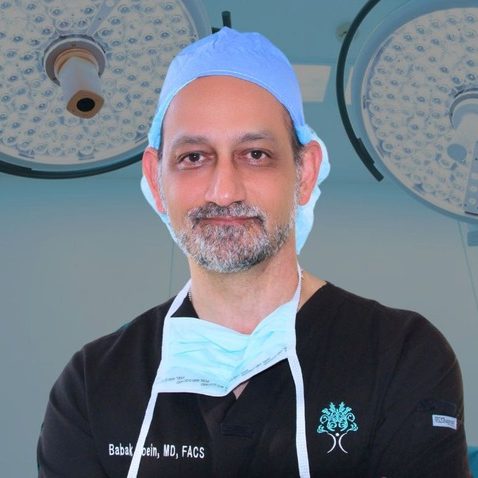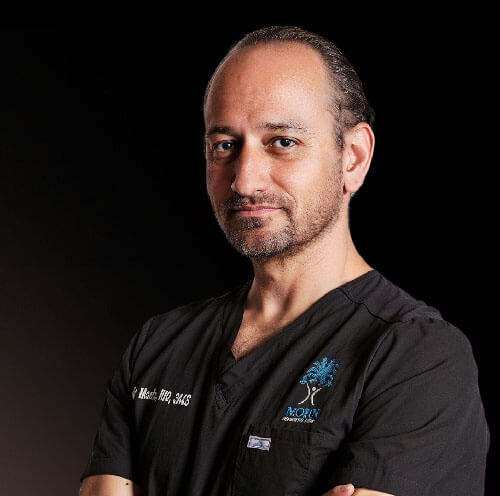Endoscopic Sleeve Gastroplasty (ESG)
Endoscopic sleeve gastroplasty (ESG) is a new, non-surgical, minimally invasive bariatric procedure that can lead to significant weight loss with lowered risks of complications. Endoscopic Sleeve procedure also offers reduced downtime.

Endoscopic Sleeve Gastroplasty (ESG) Procedure Video
What is Endoscopic Sleeve Gastroplasty (ESG)?
Endoscopic sleeve gastroplasty is unlike most bariatric procedures in that there are no incisions required. With traditional techniques like gastric sleeve surgery and Roux-en-Y gastric bypass surgery, much of the downtime you face is spent recovering from the trauma to your skin. That is not the case with ESG.

Another difference is that ESG is considered a low BMI bariatric procedure. That means that you can qualify for the weight loss technique even if you have a body mass index as low as 30. Meanwhile, gastric sleeve surgery and gastric bypass surgery CA CC require you to have BMIs of 35 to 40 and above.
The similarity to other bariatric procedures is that ESG can lead to long-term weight loss. Another similarity with a majority of bariatric surgeries is that ESG requires patients to commit to a year of physician’s advice, which includes healthy eating and a regular exercise routine.
ESG is performed by a board-certified bariatric surgeon or gastroenterologist. The procedure involves an endoscope, which is a camera attached to a flexible tube that is inserted through the mouth and down into the stomach. During the procedure, the stomach is diminished in size, which forces you to eat less, leading to long-term weight loss.
How Does the weight Loss Surgeon Perform Endoscopic Sleeve Gastroplasty?
The ESG procedure is considered an outpatient operation that is done under general anesthesia, which means you will be unconscious during the non-surgical session. The bariatric surgeon uses a flexible tube affixed with a camera and endoscopic suturing device, which is better known by the term endoscope. The camera allows the operating surgeon to view the internal workings of your stomach by way of a monitor in the operating room. The surgeon performs the surgery inside your abdomen, which prevents the need for any external incisions. Because of this factor, there is a lowered risk to your health and almost no downtime following the completion of the operation.

The surgeon uses the endoscope to place sutures in the stomach, which converts the stomach into a much smaller tube or sleeve. As a result, you are restricted by how much food you can eat. A normal stomach holds around 3 pints of food, while the newly converted stomach holds around a half-cup of food. The procedure teaches you to eat smaller portions. You also feel fuller faster during meals.
Dr. Moein: Expert in Endoscopic Sleeve Gastroplasty (ESG)

Dr. Moein is a board-certified bariatric surgeon specializing in Endoscopic Sleeve Gastroplasty (ESG), a non-surgical weight loss procedure that reduces stomach size without incisions. With extensive expertise in minimally invasive techniques, he helps patients achieve long-term weight loss safely and effectively. Dr. Moein prioritizes patient care, offering personalized guidance on nutrition, exercise, and lifestyle changes to ensure lasting results.
Who is Suitable Candidate for Endoscopic Sleeve Gastroplasty?
This innovative weight loss procedure is suitable for those with elevated body mass index (BMI) scores of 30 or higher. In many cases, those with high BMIs also suffer from one or more obesity-related ailments like type 2 diabetes, high blood pressure, obstructive sleep apnea, and nonalcoholic fatty liver disease.
Prepare for Endoscopic Sleeve Gastroplasty
If your bariatric surgeon during the initial consultation deems you a suitable candidate for endoscopic sleeve gastroplasty, your health team will give you specific instructions on how to adequately prepare. They may perform various lab tests and examinations prior to surgery to ensure the state of your health. The health team will advise you to refrain from eating and drinking in the hours prior to the procedure. They will also advise you on which medications you can and cannot take. They might require you to begin a physical fitness program as a part of your bariatric treatment plan.
The Day of Your ESG Procedure
On the day of your Endoscopic Sleeve Gastroplasty (ESG), you will arrive at the surgical center or hospital, where the medical team will prepare you for the procedure. After a brief check-in, you will be placed under light anesthesia to ensure comfort throughout the process. The surgeon will then insert a flexible endoscope through your mouth and into your stomach, using sutures to reduce its size. The entire procedure typically takes about 60 to 90 minutes, and since ESG is minimally invasive, there are no external incisions.
Endoscopic Sleeve Gastroplasty Recovery
Recovery from Endoscopic Sleeve Gastroplasty (ESG) is typically quick, as the procedure is minimally invasive and requires no external incisions. Most patients can go home the same day and resume light activities within 24 to 48 hours. Some may experience mild discomfort, nausea, or bloating in the first few days, but these symptoms usually subside quickly. A liquid diet is required initially, followed by a gradual transition to soft and solid foods as the stomach adjusts to its new size.
How Much Does Endoscopic Sleeve Gastroplasty Cost?
The cost of Endoscopic Sleeve Gastroplasty (ESG) typically ranges between $12,000 and $20,000, depending on factors such as the surgeon’s expertise, the medical facility, geographic location, and any additional services included in the treatment plan.
Does Insurance Cover Endoscopic Sleeve Gastroplasty?
Many procedures today recognize the life-quality benefits of bariatric techniques such as gastric bypass and gastric sleeve. However, since endoscopic sleeve gastroplasty is a new type of procedure, your policy may not cover the fees associated with the non-surgical weight loss technique. Check with your policyholder for details.
While insurance is unlikely to cover ESG, there are ways to afford the weight loss procedure. If you cannot pay the full amount outright, medical financing is available. Companies like Care Credit can be used to cover the costs of surgery. This will allow you to worry about payment fulfillment later. Other ideas include getting a personal loan or a credit union loan and borrowing the fees necessary from family or friends.
FAQ
Start Your Journey with Endoscopic Sleeve Gastroplasty
When you have tried diet and exercise, but nothing has succeeded in helping you achieve a healthy weight, endoscopic sleeve gastroplasty might be right for you. Southern California residents are encouraged to call Healthy Life Bariatrics to schedule a consultation with Dr. Babak Moeinolmolki, one of the world’s leading bariatric surgeons.
Dr. Moein (for short) is a dual-board-certified bariatric surgeon who also specializes in post-bariatric body contouring surgery. That means you can achieve improved health and a toned appearance all under the same roof and by the same medical professional. Dial (310)861-4093 now to start your weight loss journey with a safer, healthier bariatric procedure aimed at defeating the disease of obesity.


